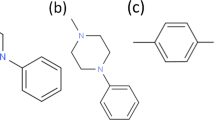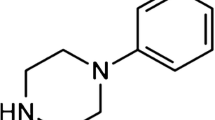Abstract
We examined an in vitro system to screen for diarrheagenic chemicals using an established intestinal cell line (T84 human colonic carcinoma). The cells were grown on Millicell-PCF (polycarbonate membrane) wells. The cells were seeded at approximately 5 × 106 cells/30mm well and incubated for 9–11 days in a 5% C02 incubator saturated with water at 37°C. The culture medium was a 1:1 mixture of Ham's F12 and Dulbecco's MEM with 5% fetal bovine serum and 25 pglml gentamicin sulfate. The well containing cells was removed from the incubator and mounted in a modified Ussing chamber for measurement of shortcircuit current (Isc). Chemical-induced increases in Psc are usually indicative of electrogenic epithelial Cl− secretion, which is associated with diarrheagenic effects in animals and humans. T84 cells grown on Millicell-PCF membrane responded with an increase in Isc after basolateral addition of the cholinergic (muscarznic) agonist carbachol, prostaglandin E2, 16,16-dimethylprostaglandin E2, and forskolin, while non-diarrheagenic prostaglandin D2 did not affect Isc. Based on our results, this in vitro system has the potential to be adapted as a rapid screen for detecting diarrheagenic chemicals.
Similar content being viewed by others
Abbreviations
- dmPGE2 :
-
16,16-dimethylPGE2
- EC50 :
-
50% of maximum effective concentration
- EDTA:
-
ethylenediaminetetraacetate
- ISC :
-
short-circuit current
- PGD2 :
-
prostaglandin D2
- PGE2 :
-
prostaglandin E2
- PD:
-
potential difference
- RT :
-
transepithelial resistance
References
ADAMS, H.R. (1988). “Cholinergic pharmacology: Autonomic drugs.” In: Veterinary Pharmacology and Therapeutics. (N.H. Booth and L.E. McDonald, eds.), Iowa State University Press, Ames, IA. pp. 122–123.
BABICH, H., SARDANA, M.K., and BORENFREUND, E. (1988). “Acute cytotoxicities of polynuclear aromatic hydrocarbons determined in vitro with the human liver tumor cell line, HepG2.” Cell Biol. Toxicol. 4: 295–309.
BABICH, H. and BORENFREUND, E. (1988). “Structure-activity relationships for diorganotins, chlorinated benzenes and chlorinated anilines established with bluegill sunfish BF-2 cells.” Fundam. Appl. Toxicol. 10: 295–301.
BARRETT, K.E. and DHARMSATHAPHORN, K. (1990). “Mechanism of chloride secretion in a colonic epithelial cell line.” In: Textbook of Secretory Diarrhea. (E. Lebenthal and M. Duffey, eds.). Raven Press Ltd., New York. pp. 59–66.
BHAT, S.V., BAJWA, B.S., DORNAAUER, H., and DESOUZA, N.J. (1977). “Structure and stereochemistry of new labdane diterpenoids from Coleus forskohlii briq.” Tetrahed. Lett. 19: 1669–1672.
BORENFREUND, E. and BABICH, H. (1987). “In vitro cytotoxicity of heavy metals, acrylamide and organotin salts to neural cells and fibroblasts.” Cell Biol. Toxicol. 3: 63–73.
BORENFREUND, E. and PUERNER, J. (1984). “A simple quantitative procedure using monolayer cultures for cytotoxicity assays (HTD/NR-90).” J. Tissue Cult. Methods 9(1): 7–9.
CAREY, H.V., COOKE, H.J., NEMETH, P.R., ZAFIROF, D.H., and WOOD, J.D. (1985). “Nervemediated action of forskolin on guinea pig ileal mucosa.” Experientia 41: 1156–1158.
GAGINELLA, T.S. (1990). “Eicosanoid-mediated intestinal secretion.” In: Textbook of Secretory Diarrhea. (E. Lebenthal and M. Duffey, eds.), Raven Press, Ltd., New York. pp. 15–30.
GEORG, K.J., DIENER, C., DIENER, M., and RUMMEL, W. (1991). “Antisecretory effect of prostaglandin D2 in rat colon in vitro: action sites.” Am. J. Physiol. 260: G904-G910.
KEENAN, C.M. and RANGACHARI, P.K. (1991). “Contrasting effects of PGE2 and PGD2: Ion transport in the canine proximal colon.” Am. J. Physiol. 260: G481-G488.
MADARA, J.L. and DHARMSATHAPHORN, K. (1985). “Occluding junction structure-function relationship in a cultured human colonic monolayer.” J. Cell Biol. 101: 2124–2133.
McROBERTS, J.A. and BARRETT, K.E. (1989). “Hormone-regulated ion transport in T84 colonic cells.” In: Functional Epithelial Cells in Culture. (K.S. Matlin and J.D. Valentich, eds.), Alan R. Liss, Inc., New York. pp. 235–265.
MURAKAMI, H., and MASUI, H. (1980). “Hormonal control of human colon carcinoma cell growth in serum free media.” Proc. Natl. Acad. Sci. USA 77: 3464–3468.
MUSCH, M.W., FIELD, M., MILLER, R.J., and STOFF, J.S. (1987). “Homologous desensitization to prostaglandins in rabbit ileum.” Am. J. Physiol. 252 (Gastrointest. Liver Physiol. 15): G120-G127.
NATH, S.K. and DESJEUX, J.F. (1990). “Human intestinal cell lines as in vitro tools for electrolyte transport studies with relevance to secretory diarrhoea.” J. Diarrhoeal Dis. Res. 8: 133–142.
NORTH-ROOT, H., YACKOVICH, F., DEMETRULIAS, J., GACULA, M.,Jr., AND HEINZE, J.E. (1985). “Prediction of the eye irritation potential of shampoos using the in vitro SIRC toxicity test.” Food Chem. Toxicol. 23: 271–273.
ROBERT, A., NEZAMIS, J.E., LANCASTER, C., HANCHAR, A.J., and KLEPPER, M.S. (1976). “Enteropooling assay: A test for diarrhea produced by prostaglandins.” Prostaglandins 2: 809–828.
SEAMON, K. and DALY, J.W. (1981). “Activation of adenylate cyclase by the diterpene forskolin does not require the guanine nucleotide regulatory protein.” J. Biol. Chem. 256: 9799–9801.
TAPPER, E.J., POWELL, D.W., and MORRIS, S.M. (1978). “Cholinergic-adrenergic interactions on intestinal ion transport.” Am. J. Physiol. 235 (4): E402–409.
TRIGLIA, D. WEGENER, P.T., and HARBELL, J. (1989). “Interlaboratory validation study of the keratinocyte neutral red bioassay from Clonetics Corporation.” In: Alternative Methods in Toxicology. (A.M. Goldberg, ed.). Vol. 7. MaryAnn Liebert, Inc., New York. pp. 357–365.
YOUNG, A. and LEVIN, R.J. (1990). “Diarrhea of famine and malnutrition: Investigations using a rat model. 1 Jejunal hypersecretion induced by starvation.” Gut 31: 43–53.
Author information
Authors and Affiliations
Rights and permissions
About this article
Cite this article
Oshiro, Y., Kachur, J.F., Balwierz, P.S. et al. An in vitro system to screen for diarrheagenic chemicals. Cell Biol Toxicol 9, 85–94 (1993). https://doi.org/10.1007/BF00755142
Issue Date:
DOI: https://doi.org/10.1007/BF00755142




